
  

























 |
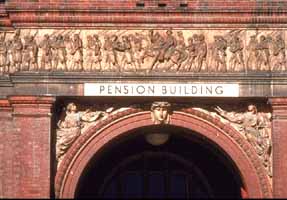
1880s brick building with terra-cotta trim. |
The
longevity and appearance of a masonry wall is dependent upon the
size of the individual units and the mortar.
Stone
is one of the more lasting of masonry building materials and has
been used throughout the history of American building construction.
The kinds of stone most commonly encountered on historic buildings
in the U.S. include various types of sandstone, limestone, marble,
granite, slate and fieldstone. Brick varied considerably
in size and quality. Before 1870, brick clays were pressed into
molds and were often unevenly fired. The quality of brick depended
on the type of clay available and the brick-making techniques; by
the 1870s--with the perfection of an extrusion process--bricks became
more uniform and durable. Terra cotta is also a kiln-dried
clay product popular from the late 19th century until the 1930s.
The development of the steel-frame office buildings in the early
20th century contributed to the widespread use of architectural
terra cotta. Adobe, which consists of sun-dried earthen bricks,
was one of the earliest permanent building materials used in the
U.S., primarily in the Southwest where it is still popular.Mortar is used to bond together masonry units. Historic mortar was generally quite soft, consisting primarily of lime and sand with other additives. After 1880, portland cement was usually added resulting in a more rigid and non-absorbing mortar. Like historic mortar, early stucco coatings were also heavily lime-based, increasing in hardness with the addition of portland cement in the late 19th century. Concrete has a long history, being variously made of tabby, volcanic ash and, later, of natural hydraulic cements, before the introduction of portland cement in the 1870s. Since then, concrete has also been used in its precast form.
While masonry is among the most durable of historic building materials, it is also very susceptible to damage by improper maintenance or repair techniques and harsh or abrasive cleaning methods.
|
|
Masonry
|
....Identify,
retain, and preserve
|
 |
|
recommended.....
|

|
| |
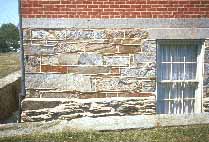
Materials and craftsmanship illustrated in stone wall. |
Identifying,
retaining, and preserving masonry features that are important in
defining the overall historic character of the building such as
walls, brackets, railings, cornices, window architraves, door pediments,
steps, and columns; and details such as tooling and bonding patterns,
coatings, and color.
|
|
not
recommended.....
|

|
| |
Removing
or radically changing masonry features which are important in defining
the overall historic character of the building so that, as a result,
the character is diminished.
Replacing
or rebuilding a major portion of exterior masonry walls that could
be repaired so that, as a result, the building is no longer historic
and is essentially new construction.
Applying
paint or other coatings such as stucco to masonry that has been
historically unpainted or uncoated to create a new appearance.
Removing
paint from historically painted masonry.
Radically
changing the type of paint or coating or its color.
|
|
Masonry
|
....Protect
and Maintain
|
 |
|
recommended.....
|

|
| |
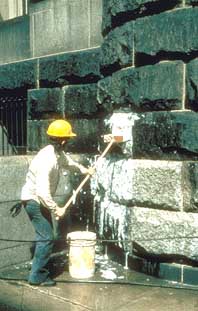
Chemical cleaning to remove dirt from granite. |
Protecting
and maintaining masonry by providing proper drainage so that water
does not stand on flat, horizontal surfaces or accumulate in curved
decorative features.
Cleaning
masonry only when necessary to halt deterioration or remove heavy
soiling.
Carrying
out masonry surface cleaning tests after it has been determined
that such cleaning is appropriate. Tests should be observed over
a sufficient period of time so that both the immediate and the long
range effects are known to enable selection of the gentlest method
possible.
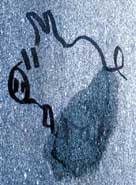
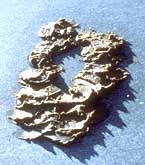
Removing felt-tipped
marker graffiti with poultice. |
Cleaning
masonry surfaces with the gentlest method possible, such as low
pressure water and detergents, using natural bristle brushes.
Inspecting
painted masonry surfaces to determine whether repainting is necessary.
Removing
damaged or deteriorated paint only to the next sound layer using
the gentlest method possible (e.g., handscraping) prior to repainting.
Applying
compatible paint coating systems following proper surface preparation.
Repainting
with colors that are historically appropriate to the building and
district.
Evaluating
the overall condition of the masonry to determine whether more than
protection and maintenance are required, that is, if repairs to
the masonry features will be necessary.
|
|
not
recommended.....
|

|
| |
Failing
to evaluate and treat the various causes of mortar joint deterioration
such as leaking roofs or gutters, differential settlement of the
building, capillary action, or extreme weather exposure.
Cleaning
masonry surfaces when they are not heavily soiled to create a new
appearance, thus needlessly introducing chemicals or moisture into
historic materials.
Cleaning
masonry surfaces without testing or without sufficient time for
the testing results to be of value.
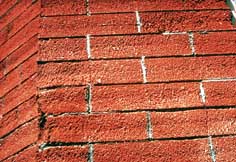
Historic brick damaged by sandblasting. |
Sandblasting
brick or stone surfaces using dry or wet grit or other abrasives.
These methods of cleaning permanently erode the surface of the material
and accelerate deterioration.
Using
a cleaning method that involves water or liquid chemical solutions
when there is any possibility of freezing temperatures.
Cleaning
with chemical products that will damage masonry, such as using acid
on limestone or marble, or leaving chemicals on masonry surfaces.
Applying
high pressure water cleaning methods that will damage historic masonry
and the mortar joints.
Removing
paint that is firmly adhering to, and thus protecting, masonry surfaces.
Using
methods of removing paint which are destructive to masonry, such
as sandblasting, application of caustic solutions, or high pressure
waterblasting.
Failing
to follow manufacturers' product and application instructions when
repainting masonry.
Using
new paint colors that are inappropriate to the historic building
and district.
Failing
to undertake adequate measures to assure the protection of masonry
features.
|
|
Masonry
|
....Repair
|
 |
|
recommended.....
|

|
| |
Repairing
masonry walls and other masonry features by repointing the mortar
joints where there is evidence of deterioration such as disintegrating
mortar, cracks in mortar joints, loose bricks, damp walls, or damaged
plasterwork.
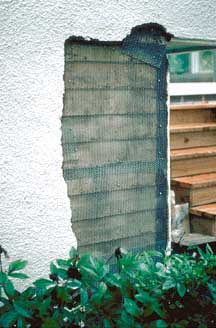
Preparation for stucco repair. |
Removing
deteriorated mortar by carefully hand-raking the joints to avoid
damaging the masonry.
Duplicating
old mortar in strength, composition, color, and texture.
Duplicating
old mortar joints in width and in joint profile.
Repairing
stucco by removing the damaged material and patching with new stucco
that duplicates the old in strength, composition, color, and texture.
Using
mud plaster as a surface coating over unfired, unstabilized adobe
because the mud plaster will bond to the adobe.
Cutting
damaged concrete back to remove the source of deterioration (often
corrosion on metal reinforcement bars). The new patch must be applied
carefully so it will bond satisfactorily with, and match, the historic
concrete.
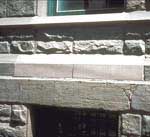
Replacement
stones tooled to match original. |
Repairing
masonry features by patching, piecing-in, or consolidating the masonry
using recognized preservation methods. Repair may also include the
limited replacement in kind--or with compatible substitute material--of
those extensively deteriorated or missing parts of masonry features
when there are surviving prototypes such as terra-cotta brackets
or stone balusters.
Applying
new or non-historic surface treatments such as water-repellent coatings
to masonry only after repointing and only if masonry repairs have
failed to arrest water penetration problems.
|
|
not
recommended.....
|

|
| |
Removing
nondeteriorated mortar from sound joints, then repointing the entire
building to achieve a uniform appearance.
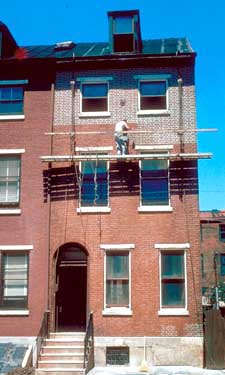
Loss
of the historic character due to insensitive repointing. |
Using
electric saws and hammers rather than hand tools to remove deteriorated
mortar from joints prior to repointing.
Repointing
with mortar of high portland cement content (unless it is the content
of the historic mortar). This can often create a bond that is stronger
than the historic material and can cause damage as a result of the
differing coefficient of expansion and the differing porosity of
the material and the mortar.
Repointing
with a synthetic caulking compound.
Using
a "scrub" coating technique to repoint instead of traditional repointing
methods.
Changing
the width or joint profile when repointing.
Removing
sound stucco; or repairing with new stucco that is stronger than
the historic material or does not convey the same visual appearance.
Applying
cement stucco to unfired, unstabilized adobe. Because the cement
stucco will not bond properly, moisture can become entrapped between
materials, resulting in accelerated deterioration of the adobe.
Patching
concrete without removing the source of deterioration.
Replacing
an entire masonry feature such as a cornice or balustrade when repair
of the masonry and limited replacement of deteriorated of missing
parts are appropriate.
Using
a substitute material for the replacement part that does not convey
the visual appearance of the surviving parts of the masonry feature
or that is physically or chemically incompatible.
Applying
waterproof, water repellent, or non-historic coatings such as stucco
to masonry as a substitute for repointing and masonry repairs. Coatings
are frequently unnecessary, expensive, and may change the appearance
of historic masonry as well as accelerate its deterioration.
|
|
Masonry
|
....Replace
|
 |
|
recommended.....
|

|
| |
Replacing
in kind an entire masonry feature that is too deteriorated to repair--if
the overall form and detailing are still evident--using the physical
evidence as a model to reproduce the feature. Examples can include
large sections of a wall, a cornice, balustrade, column, or stairway.
If using the same kind of material is not technically or economically feasible, then a compatible substitute material may be considered.
|
|
not
recommended.....
|

|
| |
Removing
a masonry feature that is unrepairable and not replacing it; or
replacing it with a new feature that does not convey the same visual
appearance.
|
| |
Design
for Missing Historic Features
The
following work is highlighted to indicate that it represents the
particularly complex technical or design aspects of rehabilitation
projects and should only be considered after the preservation concerns
listed above have been addressed.
|
|
recommended.....
|

|
| |
Designing
and installing a new masonry feature such as steps or a door pediment
when the historic feature is completely missing. It may be an accurate
restoration using historical, pictorial, and physical documentation;
or be a new design that is compatible with the size, scale, material,
and color of the historic building.
|
|
not
recommended.....
|

|
| |
Creating
a false historical appearance because the replaced masonry feature
is based on insufficient historical, pictorial, and physical documentation.
Introducing
a new masonry feature that is incompatible in size, scale, material
and color.
|
|

